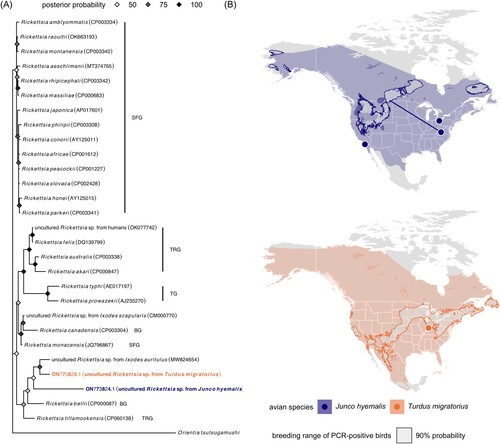Figures & data
Figure 1. (A) Bayesian phylogeny of the novel Rickettsia spp. with closely related and reference rickettsiae sequences from GenBank, including those in the bellii group (BG), typhus group (TG), transitional group (TRG), and spotted fever group (SRG). Orientia tsutsugamushi (NZ_LYMT01000407) is used as an outgroup. Nodes are colored by posterior probability. (B) Field sites relative to the American robin and dark-eyed junco distribution with the estimated breeding origins of the two PCR-positive birds. Geographic assignments were performed using feather hydrogen of previously established known-origin juncos, robins, and other passerines (Fig. S1). Paths display the corresponding median migration distances, defined as kilometers between the winter capture site and median coordinates in the 90% probability breeding ground.

